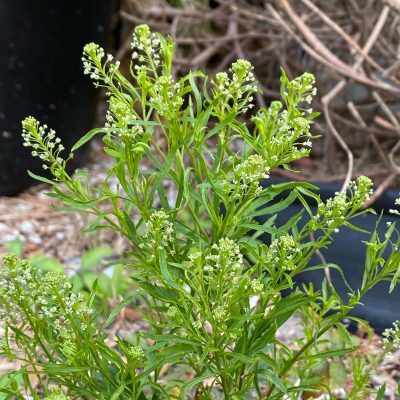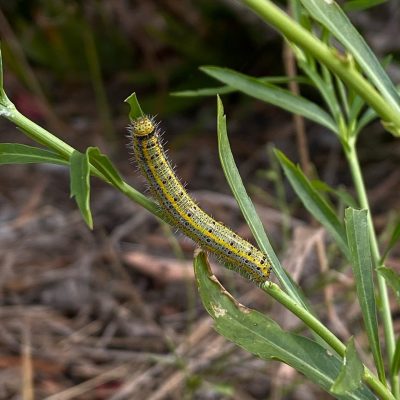
Pepperweed (Photo credit: Kaylynn Low)
Most of us are familiar with the sight and taste of cabbage, broccoli, kale, radishes, turnips, and mustards on our dinner plates. But did you know that these vegetables–collectively known as cruciferous vegetables–are all related?
These plants are members of the Brassicaceae family, which comprises approximately 4,060 different species. Many of them have been cultivated for agricultural purposes and are staple foods in diets across the world. All members of the Brassicaceae family are characterized by cruciform (“cross shaped”) flowers that are usually yellow or white. Hence the name cruciferous!
This month’s EcoQuest will focus on members of the mustard family that grow in our own backyards, some of which are also edible! There are six native mustard species that have been documented via preserved specimen collections in Sarasota and Manatee counties:
Coastal searocket (Cakile lanceolata)
Pennsylvania bittercress (Cardamine pensylvanica)
Western tansymustard (Descurainia pinnata)
Virginia pepperweed (Lepidium virginicum)
Florida watercress (Nasturtium floridanum)
Southern marsh yellowcress (Rorippa teres)
Our native mustards inhabit a variety of habitats. Coastal searocket, for example, grows in coastal dune ecosystems, while Florida watercress grows in spring and swamp ecosystems. Florida watercress is also our only endemic mustard species, meaning it is not only native to Florida but also only found in Florida.
One of the most common Florida native Brassicaceae species, Virginia pepperweed, is likely growing in your neighborhood or a disturbed site nearby. Not only is this peppery native edible to humans, it is also a host plant for both the checkered white butterfly (Pontia protodice) and the great southern white butterfly (Ascia monuste).

Great southern white caterpillar on a Pepperweed Plant
(Photo credit: Kaylynn Low)
There are five non-native species that have been documented in the two counties as well:
India mustard (Brassica juncea)
Lesser swinecress (Lepidium didymum)
European watercress (Nasturtium officinale)
Wild radish (Raphanus raphanistrum)
Charlock mustard (Sinapsis arvensis)
All non-native species that have been introduced to Florida ecosystems are edible! Most have been grown as agricultural crops, so it is likely that they originally spread by escaping from cultivation. European watercress is specifically grown as a crop in Florida to supplement the supply for other states that cannot grow it during the winter months.
Keep an eye out for updates on Bioblitz times and locations where we will forage for our local mustard species! Have your weeds and eat them too!
You can join the project through the iNaturalist app by searching for the “Mustard Madness – May & June Sarasota-Manatee EcoFlora EcoQuest.”
You can learn more about this project by going to the Selby Gardens EcoFlora website or emailing us at ecoflora@selby.org and spatton@selby.org.
